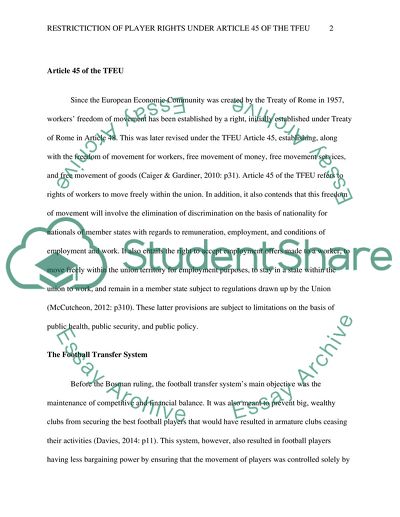Cite this document
(“The Extent to which Football Clubs and Governing Bodies Restrict Essay”, n.d.)
The Extent to which Football Clubs and Governing Bodies Restrict Essay. Retrieved from https://studentshare.org/law/1644854-the-extent-to-which-football-clubs-and-governing-bodies-restrict-player-rights-under-article-45-of-the-tfeu
The Extent to which Football Clubs and Governing Bodies Restrict Essay. Retrieved from https://studentshare.org/law/1644854-the-extent-to-which-football-clubs-and-governing-bodies-restrict-player-rights-under-article-45-of-the-tfeu
(The Extent to Which Football Clubs and Governing Bodies Restrict Essay)
The Extent to Which Football Clubs and Governing Bodies Restrict Essay. https://studentshare.org/law/1644854-the-extent-to-which-football-clubs-and-governing-bodies-restrict-player-rights-under-article-45-of-the-tfeu.
The Extent to Which Football Clubs and Governing Bodies Restrict Essay. https://studentshare.org/law/1644854-the-extent-to-which-football-clubs-and-governing-bodies-restrict-player-rights-under-article-45-of-the-tfeu.
“The Extent to Which Football Clubs and Governing Bodies Restrict Essay”, n.d. https://studentshare.org/law/1644854-the-extent-to-which-football-clubs-and-governing-bodies-restrict-player-rights-under-article-45-of-the-tfeu.


